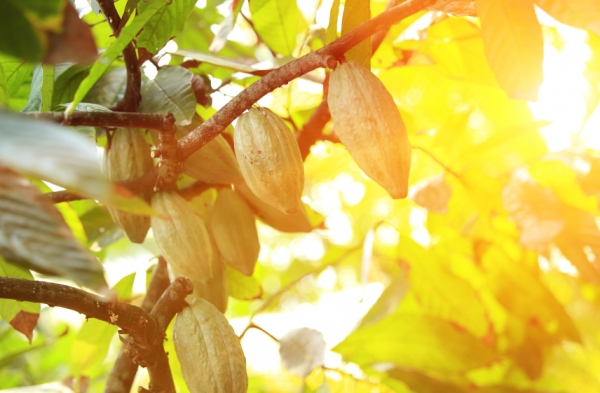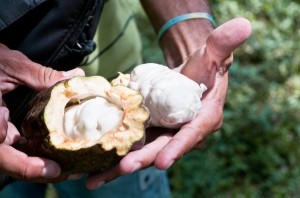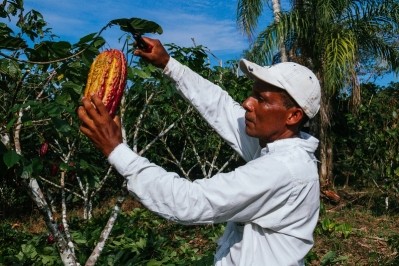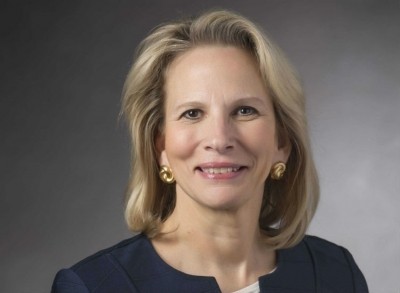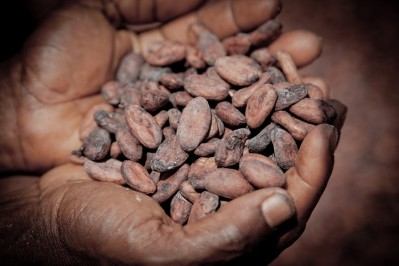Hershey talks sustainability goals: ‘The challenge is the enormity of the work in front of us’
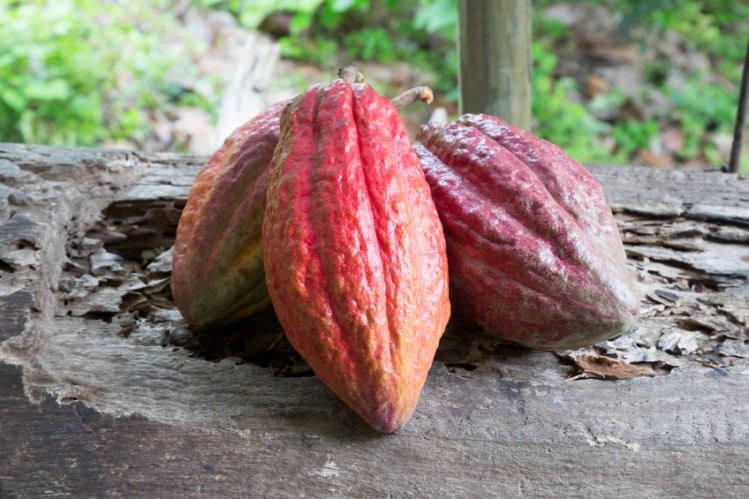
One hundred percent of the cocoa Hershey sources is now certified sustainable, a move that Jeff King explained directly supports farmer incomes and higher environmental standards.
“We are very focused on cocoa sustainability – how we improve farmer livelihoods, reduce the incidence of child labour on family farms and ensure zero deforestation where cocoa is grown,” King told FoodNavigator.
Characterising the evolution made to date in cocoa sustainability, King suggests that both Hershey and the industry as a whole have made ‘strong progress’.
“Hershey has reached a milestone where 100% of our cocoa is now certified and sustainable. This ensures basic sustainability programs across all the farms that we source our cocoa. And across our sustainability strategy, our programs are showing meaningful progress.”
Defining ‘sustainable’ cocoa?
What does Hershey mean when it talks about sustainable cocoa?
According to King, the company’s efforts centre on three pivotal issues. “Our programs focus on enhancing farmer livelihoods, eliminating child labour and preserving the ecosystem. This means we enhance the lives of farmers and their families, enable children to thrive and get an education and support whole communities while also protecting and restoring the environment through programs like agroforestry and tree planting.”
Detailing the improvements Hershey’s sustainability programs have achieved, King noted that the group’s ViVi school feeding program in Ghana reached 58,300 students across 196 schools in 2019, delivering a vitamin fortified snack that is made from 100% locally sourced peanuts.
Hershey has partnered with the TRECC program - Transforming Education in Cocoa Communities - to pilot education targeting youths and promoting ‘life skills and financial literacy’ and it continues to expand its Child Labor Monitoring and Remediation System across its supply chain. “As of 2019, we had almost 69,000 (68,988) children monitored in this system. To date, 4,616 children have been identified as doing work deemed inappropriate and are in active remediation. Importantly, we found zero cases of forced labour in our supply chain through this work,” King elaborated.
Working with communities in cocoa sourcing regions to tackle farmer poverty, Hershey promotes diversifying farming incomes and expanding economic opportunities. “This is done through group farmer training and individual coaching where we’re reached ~51,009 farmers (14% of whom were female). We also help train families to diversify their incomes through additional crops such as plantains or spices. Also, helping women’s groups start businesses though things like snail rearing or soap making.”
Hershey also recognises that infrastructure development is important too. The company supports the establishment of Village Saving and Loan Associations and in 2019 the US-based chocolate giant set up 253 community saving groups.
‘Preserving ecosystems’ is also an important plank in Hershey’s sustainable cocoa strategy, King continued. In 2019, the company distributed over 1.7m shade and cocoa tree saplings. “We work with farmers on re-establishing the forest one farm at a time,” King said.
For this to work, Hershey needs to know where the cocoa it purchases comes from. The Kisses to Reese’s maker has, to date, mapped around 90% of the cocoa in its Cocoa For Good scheme. But Hershey intends to dramatically ramp up its traceability capabilities.
To this end, the company announced plans to expand its Cocoa For Good program, committing to 100% direct-sourced cocoa in high-risk areas by 2025, which will include all of its cocoa sourced by its suppliers from Cote d’Ivoire and Ghana.
Direct supply for transparency and impact
“This expanded commitment will make Hershey’s cocoa from these countries traceable from the farm to the first point of purchase, giving us a clear line of sight into where all of our cocoa from West Africa is grown and how it is produced – providing more transparency for consumers and all stakeholders,” King told this publication.
“Transitioning to 100% direct cocoa sourcing for these high-risk areas not only gives us more transparency into our cocoa supply chain but it enables us to provide more support to farmers and scale-up programs such as Child Labor Monitoring and Remediation to 100% of our Cote d’Ivoire and Ghana-sourced cocoa by 2025 to help end child labour,” he continued.
Hershey has developed a clear roadmap to move to direct supply over the next five years. “It takes time and we will build from today over the next five years. We have a detailed expansion plan – year by year – to achieve 100% by 2025.”
Technology is playing an important role in the company’s ability to move to a direct sourcing model, King revealed. “We are mapping 100% of our direct source farms as we expand our direct sourcing. These GPS coordinates are uploaded into a system that can match our farms to the coordinates of all protected areas in Cote d’Ivoire and Ghana. This helps ensure we are not encroaching on protected areas. We are also piloting satellite systems to regularly monitor these farms and receive immediate feedback on deforestation if it occurs.”
'This is about accountability and confidence'
According to analysts at data and insight provider Lumina Intelligence, owned by FoodNavigator publisher William Reed Business Media, direct suppliers likely account for less than 50% of all farmers. The rest are indirect suppliers, smallholder farmers that sell low volumes of cocoa to middlemen. Poverty, and all associated consequences, are much bigger problems for those operating in the indirect supply chain.
In the indirect supply chain, cocoa will often pass from smallholder farmers in remote areas, to small-scale middlemen who collect the cocoa on motorbikes and sell it on to a larger middleman. The commodity will then be passed to large multinational cocoa companies, who do not have traceability for that volume of cocoa.
King believes that if more players adopted direct sourcing models it would help alleviate some of the issues that impact cocoa supply chains, from child labour and poverty to deforestation.
“This is about accountability and confidence. If all companies took accountability for a sub-set of cocoa farms, and everyone did the programs we’ve been speaking about, then all cocoa would be covered with sustainability programming.
“It is about confidence when someone asks ‘which cocoa farms do you source from’ and we can say ‘these’ farms. Unfortunately, as larger chocolate companies scale their programs, there is still a significant percentage of cocoa production that is not covered by these programs and no accountability for how this cocoa is produced and the labour conditions under which it is produced. So it’s not just important that we scale up our sourcing to 100% coverage, but more companies that buy cocoa also get involved in sustainability and responsible sourcing so that all cocoa production is covered.”
Indeed, one of Hershey’s primary learnings from its sustainability journey is the need for collaboration.
“We cannot do this alone. No single company can solve the issues in cocoa alone. We must work in concert with other cocoa companies, the governments have a critical role to play in enabling this work, and we need civil society as a partner as well.”
‘The food system has numerous challenges’
Beyond cocoa, Hershey is pushing hard on its sustainability agenda, with its CSR strategy encompassing issues as diverse as climate change and social justice.
“We are addressing our impact to the environment, continuing to responsibly source ingredients while protecting human rights, creating proper labour conditions and working to improve the lives of smallholder farmers. Many ingredients are grown in developing countries and these are big challenges for the entire food industry but ones that must be addressed with the cooperation of all stakeholders.
“The challenge is the enormity of the work in front of us and if can we address everything effectively at the pace we desire. We are facing large issues – how to address climate change; how to source ingredients responsibly across multiple commodities, how do we affect change when there are numerous inputs that we do not control; how to stretch limited grant funds across all of our community partners; how to expand and scale our programs to impact youth. And the list goes on and on,” King revealed.
In the short and medium term, the company is focused on mitigating its environmental impact across its entire value chain – from factories, to ingredient sourcing and packaging.
“At the same time, we are committed to carrying forward our company legacy of helping children to succeed through the Heartwarming Project, which works to help kids and teens build more meaningful connections and create more inclusive and empathetic communities, and helping to get youth the socio-emotional skills they need in today’s society.”
